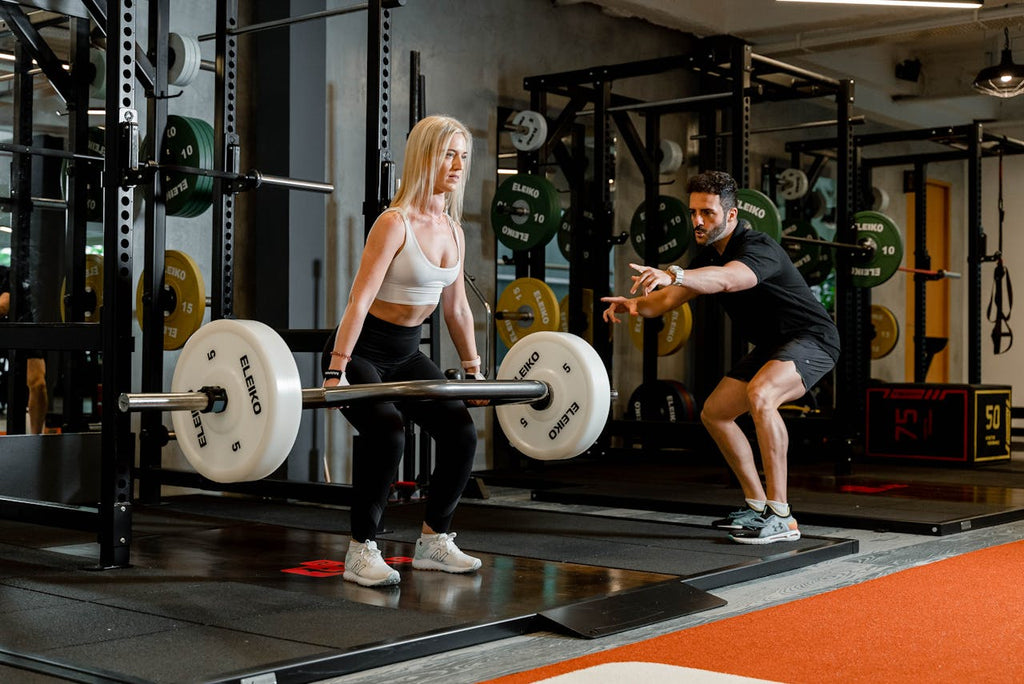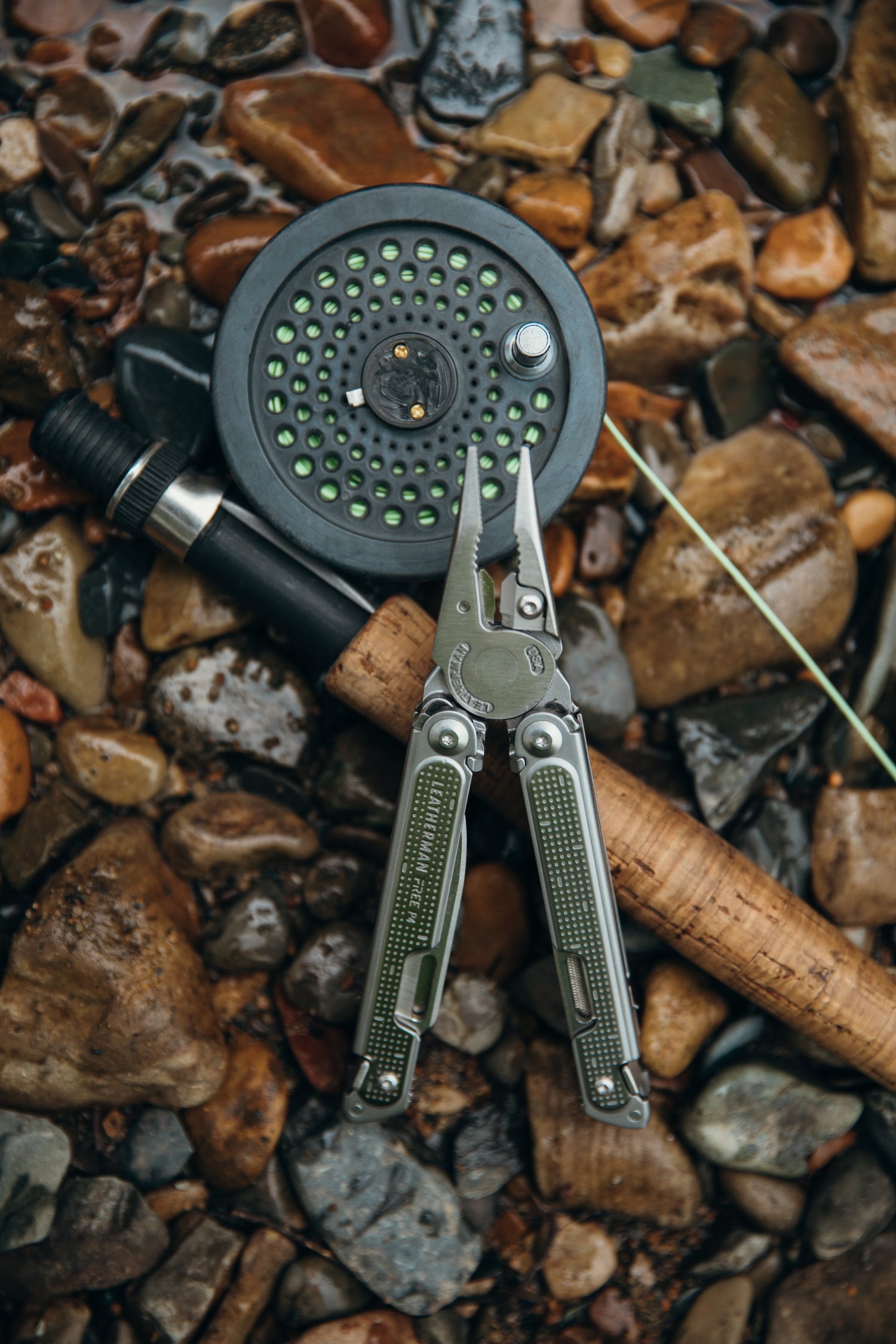The deadlift reigns supreme in the world of strength training. Lauded for its ability to build strength, improve posture, and fire up a multitude of muscle groups, it's no surprise that deadlifts are a staple in many workout routines. However, improper deadlift form can transform this powerful exercise from a champion into a potential cause of injury.
To ensure you reap the rewards of the deadlift safely and effectively, let's delve into ten common mistakes to steer clear of:
Stance Slipshod:
Your stance isn't just about staying upright during a deadlift; it's the foundation for generating explosive power. Many lifters opt for a wide stance for perceived stability, but this can actually hinder their balance and limit their ability to generate force. A wide stance reduces the contribution of their glutes and hamstrings, which are key players in the deadlift. Additionally, it restricts their range of motion, which is crucial for maximizing their lift.
Think of your feet as the launchpad for the deadlift. A proper stance allows them to engage in the movement actively. Whether you emphasize pushing through your heels or toes, consistency is key. Shifting your weight or letting your feet rotate mid-lift throws off your entire form and can lead to a failed rep or even injury.
Solution: The ideal stance should be hip-width to shoulder-width apart. Imagine standing on two tracks—your feet should be directly over those tracks. Point your toes slightly outward, typically between 15 and 30 degrees, to allow for proper knee and hip tracking during the lift. This slight outward angle also helps to engage your glutes more effectively.
Shin Shenanigans:
The barbell shouldn't be a grinding post for your shins during the deadlift. Minor contact is normal, but excessive scraping disrupts your form. Aim for the bar to be positioned directly under your mid-foot when you grip it. Imagine the barbell tracing a straight line up your shins as you lift.
Why it Matters:
- Bar Too Far Forward: This puts you at risk of rounding your lower back to initiate the lift, compromising safety and technique.
- Bar Too Far Back: You'll be forced to lift the weight around your knees, straining your lower back and potentially hindering hamstring engagement.
Finding Your Perfect Setup:
Think hip-width apart for your feet—this is the golden zone for both power and balance. Ideally, your shins should be about an inch from the bar, right in line with the middle of your feet.
Footwork Fundamentals:
Throughout the lift, your feet should be active participants, not passive bystanders. Avoid any unnecessary movement like heel-toe rocking or foot rotation. Maintain a firm, consistent push through the ground for optimal power transfer.
Neck Neglect:
During a deadlift, your neck shouldn't be on a separate mission. It should be a natural extension of your spine, maintaining a neutral alignment with your vertebrae. Ditch the urge to crane your neck upwards or hunch it downwards – both disrupt proper posture.
Why it Matters:
- Neutral Spine for Safety: A neutral spine minimizes stress on your neck and keeps your focus on maintaining proper form throughout the lift.
- No Craning, No Hunching: Craning your neck forward can lead to a rounded back, while hunching can strain your neck muscles.
Finding Neck Nirvana:
Imagine yourself in the posture of a stoic warrior, not a preening peacock. Your head should be held high but with a neutral gaze, and your spine should be straight from head to tailbone. This ensures optimal stability and safety for your entire body during the deadlift.
Hunching Horror:
The deadlift is a symphony of power, but a single wrong note – like improper hip positioning – can throw the whole song off-key. Here's why finding the "hip sweet spot" is crucial for both safety and efficiency:
The Trouble with Hips That Rise Too Fast:
Imagine launching a rocket with a faulty engine – that's what happens when your hips shoot up too early in a deadlift. This puts all the strain on your lower back, creating slack in the system (no tension) and robbing you of a powerful leg drive.
The Solution:
- Tension First, Lift Second: Before initiating the pull, create tension in your legs by "screwing your shoulder blades down and back" and pushing your feet firmly into the ground. This engages your core and hamstrings, priming them for powerful leg drive when you lift.
- Strength Matters: Building knee extensor strength, adjusting your stance for better quad activation, and understanding the optimal back angle can also prevent hips from rising prematurely.
The Pitfalls of Low-Riding Hips:
Hips that start too low can also affect your deadlift mechanics. This position pushes the bar forward, disrupting the smooth line of the pull.
The Fix:
- Footwork Fundamentals: Often, low hips stem from incorrect foot placement. Revisit the basics: stand with hip-width apart feet and ensure your shins are about an inch away from the bar. This positions the bar directly over the middle of your foot, creating a more balanced starting point.
- Setup Savvy: During setup, assess your hip height. Ask a friend to check your form or film yourself to ensure proper hip positioning.
The Golden Rule:
Throughout the lift, focus on keeping your hips down and maintaining tension in your legs before initiating the pull. Remember, proper hip positioning ensures you're using your legs and back in perfect harmony, maximizing your lift while minimizing injury risk.

Leg Drive Lag:
The deadlift might appear like a glorified leg press, but don't be fooled! While your legs play a crucial role in driving the weight upwards, the initial push shouldn't come solely from your quads.
Think "Floor Push," not Quad Squat:
Imagine initiating the lift by pushing the floor away with your feet, not squatting down. This activates your posterior chain – the powerhouse duo of your glutes and hamstrings – the true prime movers in the deadlift. A strong leg drive from these muscles not only helps you conquer heavier weights but also safeguards your lower back from excessive strain.
The Squatting Culprit:
A common deadlift faux pas is treating it like a squat. This overemphasizes your quads, neglecting your posterior chain and hindering both the weight you can lift and the muscles you effectively engage. This quad-dominant approach often goes hand-in-hand with hips that rise too quickly during the lift.
Solution: Unleash the Powerhouse Posterior Chain
To break free from the squatting trap, focus on pushing through your heels and engaging your hamstrings and glutes. Maintain a consistent back angle throughout the lift, keeping your hips from shooting up prematurely. By prioritizing your posterior chain, you'll unlock a more effective and safer deadlift, leaving your quads as strong supporting actors rather than the lead role.

The Arms Don't Curl:
During a deadlift, your arms transform into secure hooks, not bicep-building machines. Keep your arms straight and engaged throughout the lift. Resist the urge to curl the weight up with your biceps – this not only strains them but also steals power from your larger muscle groups. A straight-arm pull ensures your core and posterior chain (glutes and hamstrings) handle the heavy lifting.
Grip Strength: The Silent Partner of Leg Drive
A weak grip is like a faulty launchpad for your deadlift. It dictates whether you "pull" with your arms or "push" with your legs. When your arms take the lead, grip strength becomes the limiting factor.
Here's why a strong grip matters:
- Control and Comfort: A secure grip allows you to hold the bar confidently throughout the entire lift, enabling you to comfortably lift heavier weights.
- Wrist Safety: Pulling instead of pushing throws excess strain on your wrists, potentially leading to discomfort and even injury during heavy lifts.
The Grip Culprits:
Common culprits behind weak grip include:
- Grip Width: A grip that's too wide or too narrow can compromise your grip strength.
- Mixed Grip Confusion: Not utilizing a mixed grip (one palm facing forward, one facing backward) can also limit grip security.
Remember, this seemingly simple aspect – your grip on the bar – has a ripple effect on your entire deadlift form.
Solution: Find Your Grip Nirvana
Experiment with different grip positions to discover what feels most comfortable and secure. A mixed grip can enhance control and protect your wrists. Lifting straps can also be helpful, especially for heavier weights. They allow you to focus on form and muscle engagement while reducing stress on your wrists. Ultimately, choose a grip that empowers your leg drive and keeps your wrists happy.
Ego-ago-go:
We all dream of lifting massive weights, but in the deadlift, chasing glory can lead to disaster. Prioritizing proper form over weight is absolutely crucial, especially for beginners.
Why Form is King:
Starting with a manageable weight allows you to focus on mastering the deadlift technique. Think of it like learning a new dance: You wouldn't attempt advanced moves without mastering the basics first.
The Benefits of Flawless Form:
- Strength Gains on Autopilot: As your form improves, your strength will naturally increase. By focusing on proper technique, you'll build a solid foundation for future weightlifting achievements.
- Injury Prevention: Compromised form is a recipe for injury. When you prioritize proper technique, you minimize the risk of hurting yourself, allowing you to train consistently and safely.
The Heavy Weight Trap:
Lifting weights that are too heavy with improper form not only hinders your progress but also increases your risk of injury. Imagine trying to build a house on a shaky foundation – it's not going to end well.
The Takeaway:
Leave your ego at the gym door. Start with a manageable weight that allows you to focus on mastering the deadlift technique. As your form improves and your strength increases, gradually add more weight. Remember, slow and steady wins the race, especially when it comes to building a safe and successful deadlift habit.
Bouncing Off the Bottom:
The deadlift is a powerlifter's playground, but a single misstep – like improper hip positioning – can throw the whole workout off track. Here's why finding the "hip sweet spot" is crucial for both safety and efficiency:
The Trouble with Hips That Rise Too Fast:
Imagine launching a rocket with a faulty engine – that's what happens when your hips shoot up too early in a deadlift. This puts all the strain on your lower back, creating slack in the system (no tension) and robbing you of a powerful leg drive.
The Solution:
- Tension First, Lift Second: Before initiating the pull, create tension in your legs by "screwing your shoulder blades down and back" and pushing your feet firmly into the ground. This engages your core and hamstrings, priming them for powerful leg drive when you lift.
- Learn from the Experts: Check out Coach Bigham's Deadlift Form video for drills, such as having a partner apply pressure to your lower back during setup. This helps you feel the proper activation sequence of the core, legs, and back.
- Strength Matters: Building knee extensor strength, adjusting your stance for better quad activation, and understanding the optimal back angle can also prevent hips from rising prematurely.
The Pitfalls of Low-Riding Hips:
Hips that start too low can also affect your deadlift mechanics. This position pushes the bar forward, disrupting the smooth line of the pull.
The Fix:
- Footwork Fundamentals: Often, low hips stem from incorrect foot placement. Revisit the basics: stand with hip-width apart feet and ensure your shins are about an inch away from the bar. This positions the bar directly over the middle of your foot, creating a more balanced starting point.
- Setup Savvy: During setup, assess your hip height. Ask a friend to check your form or film yourself to ensure proper hip positioning.
Bonus Tip: The Squatting Culprit (Partner in Crime with Hips)
A common deadlift faux pas is treating it like a squat. This overemphasizes your quads, neglecting your posterior chain (glutes and hamstrings) – the true powerhouses of the deadlift. This quad-dominant approach often goes hand-in-hand with hips that rise too quickly during the lift.
Solution: Unleash the Powerhouse Posterior Chain
To break free from the squatting trap, focus on pushing through your heels and engaging your hamstrings and glutes. Maintain a consistent back angle throughout the lift, keeping your hips from shooting up prematurely. By prioritizing your posterior chain, you'll unlock a more effective and safer deadlift, leaving your quads as strong supporting actors rather than the lead role.
The Golden Rule:
Throughout the lift, focus on keeping your hips down and maintaining tension in your legs before initiating the pull. Remember, proper hip positioning ensures you're using your legs and back in perfect harmony, maximizing your lift while minimizing injury risk.
Strapped Too Soon:
Wrist straps can be your best friend when conquering heavy deadlifts. But just like any good friend, they shouldn't overshadow your hard work. Here's the key: use straps strategically, not prematurely.
Grip Strength: Your Secret Weapon
A strong grip is a weightlifter's secret weapon. It strengthens your forearms, improves overall control during lifts, and translates to better performance in other exercises. Relying on straps too early hinders the development of this valuable asset.
Straps: Your Safety Net in Action
Think of straps as a safety net – there to catch you when your grip fatigues and threatens to derail your deadlift form. When lifting heavier weights that push your grip to its limits, straps can step in and allow you to maintain proper technique without compromising safety.
The Takeaway: Strategic Support for Peak Performance
Use straps strategically. Let them be a supportive tool that allows you to focus on proper deadlift form, not a replacement for building your own grip strength. Master lighter weights with a secure, natural grip, and then strategically utilize straps when needed to conquer heavier lifts. This approach ensures you develop a strong grip while maximizing your deadlift performance.
Skipping the Setup:
The deadlift is a test of strength and patience. Rushing the setup is a recipe for disaster. Here's why taking your time is crucial:
Precision Over Speed: Master the Setup
The deadlift is a symphony of controlled power, and a strong foundation is key. Take your time to position yourself correctly under the bar—every detail – foot placement, back angle, grip – matters for a safe and efficient lift.
Brace Yourself for Success: Core Engagement is King
Think of your core as your body's natural weightlifting belt. Engage your abdominal muscles by bracing as if you're about to be punched in the stomach. This core activation provides stability and protects your spine throughout the lift.
Mind Over Muscle: The Power of Visualization
Before you pull, take a moment to visualize the entire lift in your mind. See yourself gripping the bar, initiating the pull with proper form, and lowering the weight with control. This mental rehearsal primes your muscles and ensures you approach the lift with focus and precision.
The Takeaway: Slow and Steady Wins the Race
Rushing into the deadlift is like trying to build a house on sand. Take your time with the setup, engage your core, and visualize your success. This mindful approach will not only minimize your risk of injury but also unlock your full deadlifting potential. Remember, slow and steady wins the race, especially when it comes to deadlift mastery.
By avoiding these common mistakes and prioritizing proper deadlift technique, you'll be well on your way to reaping the numerous benefits of this exercise. Remember, a strong foundation in deadlift form is essential for maximizing results and preventing injuries. If you're a beginner, consider seeking guidance from a certified personal trainer to ensure you're performing the deadlift safely and effectively. Happy lifting!






